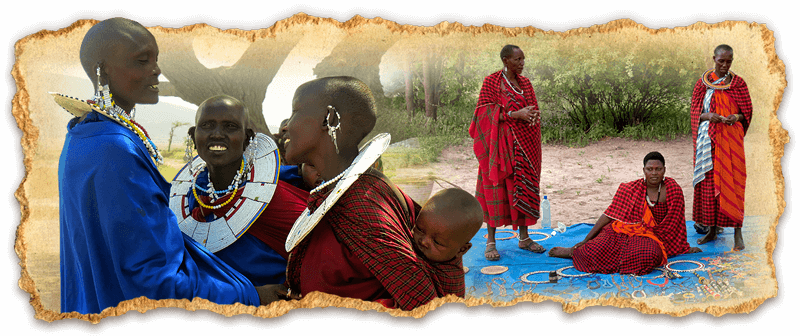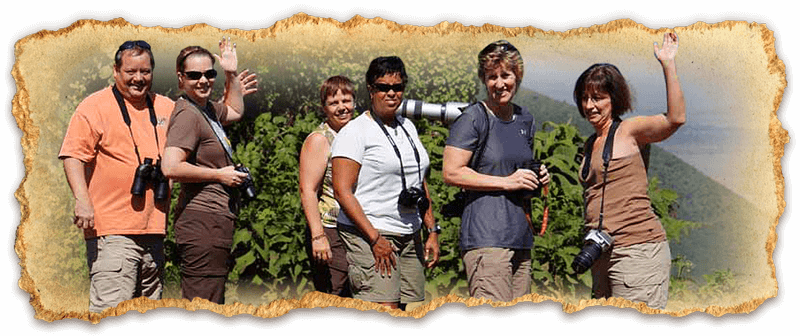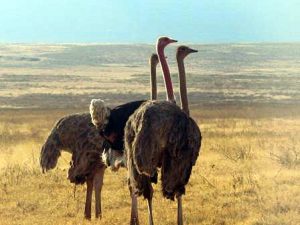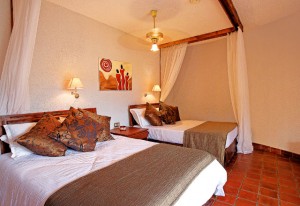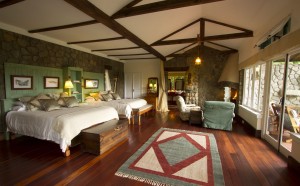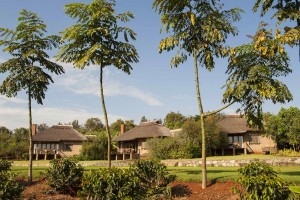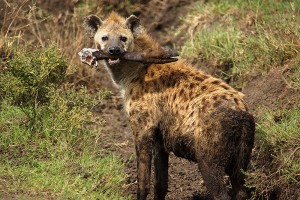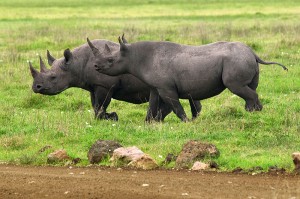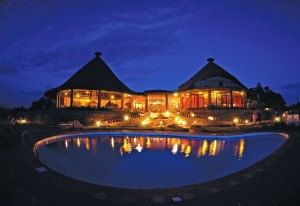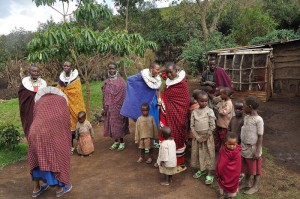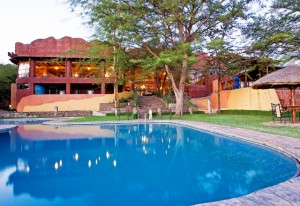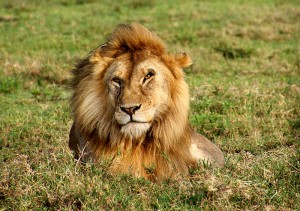Sopa Family Escape
~ Luxury Safari ~
~ Luxury Safari ~
The best season for this departure is July—October
Safari Overview
Our Luxury Sopa Family Safari offers family accommodations at Superior Lodges and gives your family the opportunity to learn and discover Northern Tanzania Parks and destinations, such as Tarangire National Park, Ngorongoro Crater, and the tremendous Serengeti Plains.
11 days
10 nights
- Safari Highlights:
- Excellent concentration of Elephants in Northern Tanzania at Tarangire National Park.
- Participate on a Village Walk, School Visit and Farmers Market
- Enjoy a home visit opportunity and learn about the Iraqw Tribe Culture and Tradition.
- Enjoy luxurious, superior accommodations.
- See the abundance and diversity of wildlife including the rare Black Rhino in Ngorongoro Crater.
- Enjoy three-nights at the heart of Serengeti, which is home to the big cats such as Lions, Leopards and Cheetahs.
- Capture the beautiful landscape and scenery from a birds-eye view while flying over the Serengeti and Ngorongoro Highland, on your return flight back to Arusha.
Itinerary
Luxury Sopa Family Safari: Discover Northern Tanzania
Day 1
Arrive in Arusha, Tanzania
You will arrive Kilimanjaro International Airport (JRO) by your international flight. Your driver guide will meet you at you at the airport and drive you to Kibo Palace Hotel (or similar) for overnight (Bed & Breakfast).
About Kibo Palace Hotel
Day 2
Tarangire National Park
Drive to Tarangire Sopa Lodge for Lunch, PM Game Drive in Tarangire National Park. Dinner and overnight at Tarangire Sopa Lodge (or similar).
About Tarangire National Park
About Tarangire Sopa Lodge
Day 3
A Game Drive Day
Early morning and late afternoon Game Drive in Tarangire National Park. Lunch, Dinner and overnight at Tarangire Sopa Lodge (or similar).
Day 4
Coffee Plantation, Garden Walk, and a Leisurely Evening
Drive to Gibbs Farm in Karatu for Coffee Plantation and Garden Walk. Then enjoy Lunch. After lunch, check in at Kitela Lodge where the rest of the afternoon will be leisure at poolside. PM at Leisure. Dinner and overnight at Kitela Lodge (or similar).
About Gibbs Farm
About Coffee Plantation and Garden Walk
About Kitela Lodge
Day 5
Discover Local Culture
Morning will do a Village Walk and School Visit. After Lunch, relax a bit and enjoy a late afternoon visit at a Farmers Market. Dinner and overnight Kitela Lodge (or similar).
About Local Culture
Day 6
Iraqw Tribe & Ngorongoro Crater
Morning do Iraqw Home Visit and then proceed to Ngorongoro Sopa Lodge for Lunch. PM drive to the Ngorongoro Crater for afternoon Game Drive. Dinner and overnight at Ngorongoro Sopa Lodge (or similar).
About Iraqw Tribe
About Ngorongoro Crater
About Ngorongoro Sopa Lodge
Day 7
Crater Game Drive, and a Leisurely Evening
Early morning Game Drives in Ngorongoro Crater with picnic Breakfast. Afternoon, return to Sopa Lodge for a hot Lunch. PM is at Leisure or optionally visit Maasai Village. Overnight at Ngorongoro Sopa Lodge (or similar).
About Maasai Village
Day 8
Olduvai Gorge Museum and Game Drive
Drive to Serengeti National Park, en route visit Olduvai Gorge Museum. Enjoy your picnic Lunch on the way. After picnic Lunch, continue to Serengeti National Park doing Game Run en route. Dinner and overnight at Serengeti Sopa Lodge (or similar).
About Olduvai Gorge Museum
About Serengeti Sopa Lodge
Day 9
Discover Serengeti National Park
Morning and afternoon Game Drive in Serengeti National Park. Dinner and overnight at Serengeti Sopa Lodge (or similar).
About Serengeti National Park
Day 10
Explore Serengeti National Park
Morning and afternoon Game Drive in Serengeti National Park. Dinner and overnight at Serengeti Sopa Lodge (or similar).
Day 11
Return Flight to Arusha
After Breakfast, enjoy a birds-eye view flight over the Serengeti Plains and Ngorongoro Highland, en route back to Arusha. Lunch and day room will be at Kibo Palace Hotel. In the evening, transfer to Kilimanjaro International Airport (JRO) for your international flight back home.
- Inclusions:
- Respective accommodations or similar throughout as indicated.
- All meals on main tour as shown (except day 1 at Bed & Breakfast).
- All game drives with photographic roof hatch land cruiser driven by a professional driver guide.
- All transfers as per the itinerary.
- Complimentary bottled water during game drives.
- Tips to waiters.
- All national park entry fees and Olduvai Museum entry fee.
- Visit to Maasai Village.
- Exclusions:
- Entry VISA and local airport tax.
- Personal and baggage insurance.
- Excess baggage charges levied by airline.
- Meals and beverages other than specified.
- Tips to your driver guide.
- Tips to porters.
- Cost for anything not mentioned on the list above.
Accommodations
Our Luxury Sopa Family Safari Features Superior Accommodations
Kibo Palace Hotel - Arusha
Named after the highest peak of Africa’s highest mountain – Mt Kilimanjaro, Kibo Palace Hotel is one of Arusha’s most exciting and innovative luxury hotels; contemporary, conductive and unconventional, a luxury hotel with a new attitude. Located in the heart of Arusha, gateway to the world’s most renowned game parks, it is a 45-minute drive from Kilimanjaro International Airport (JRO) and a 15-minute walk from Arusha city center and the Arusha International Conference Center. [learn more]
Tarangire Sopa Lodge - Tarangire National Park
Once inside the coolness of your room, you will be delighted at its space and airiness, and also the views from its sheltered veranda. With its mini-bar, two double beds and an extremely spacious, well appointed bathroom, you can only wish that you were staying an extra night. 75 spacious rooms, all with a private lounge on entering with a mini bar. Each room has 2 queen size beds with a mosquito net around them. [learn more]
Kitela Lodge - Karatu (and Near Ngorongoro Area)
Kitela Lodge is a small, exclusive lodge situated on top of a valley overlooking a coffee plantation, the Eastern wall of the Ngorongoro Crater and a beautiful waterfall. It consists of 20 spacious suites in cottages built in the style of an old colonial farm offering guests a relaxing, quiet atmosphere surrounded by beautiful gardens. Facilities features include a pool, 4 interconnected rooms, 9 King Beds, 3 Triple Rooms, large beds (all rooms), en-suite bathrooms with built in showers (all rooms), and mosquito netting. [learn more]
Ngorongoro Sopa Lodge - Ngorongoro
Facing the always magnificent sunsets to the west, and located at the highest point on Ngorongoro crater’s entire rim, Ngorongoro Sopa Lodge stands well over half a kilometre above the crater floor and offers unparalleled views across this enormous caldera. Highlight amenities include queen bedding, central heating in each room, luxury bathrooms with spacious showers, enclosed solarium at the view of Ngorongoro Crater, and swimming pool. [learn more]
Serengeti Sopa Lodge - Serengeti National Park
Located on the edge of the escarpment overlooking the plains of the south-western Serengeti National Park, home to many thousands of wild and rare animals. There are 4 very spacious double storey suites (with lounge area, dining, and balcony facing the Serengeti Plains) and 69 standard rooms, all with 2 queen size beds, carpeted, and tastefully furnished with local fabrics and pictures. Amenities include a lounge area with a mini bar and verandah facing the vast Serengeti plains extending as far as the naked eye can see. [learn more]
Named after the highest peak of Africa’s highest mountain – Mt Kilimanjaro, Kibo Palace Hotel is one of Arusha’s most exciting and innovative luxury hotels; contemporary, conductive and unconventional, a luxury hotel with a new attitude. Located in the heart of Arusha, gateway to the world’s most renowned game parks, it is a 45-minute drive from Kilimanjaro International Airport (JRO) and a 15-minute walk from Arusha city center and the Arusha International Conference Center. [learn more]
Tarangire Sopa Lodge - Tarangire National Park
Once inside the coolness of your room, you will be delighted at its space and airiness, and also the views from its sheltered veranda. With its mini-bar, two double beds and an extremely spacious, well appointed bathroom, you can only wish that you were staying an extra night. 75 spacious rooms, all with a private lounge on entering with a mini bar. Each room has 2 queen size beds with a mosquito net around them. [learn more]
Kitela Lodge - Karatu (and Near Ngorongoro Area)
Kitela Lodge is a small, exclusive lodge situated on top of a valley overlooking a coffee plantation, the Eastern wall of the Ngorongoro Crater and a beautiful waterfall. It consists of 20 spacious suites in cottages built in the style of an old colonial farm offering guests a relaxing, quiet atmosphere surrounded by beautiful gardens. Facilities features include a pool, 4 interconnected rooms, 9 King Beds, 3 Triple Rooms, large beds (all rooms), en-suite bathrooms with built in showers (all rooms), and mosquito netting. [learn more]
Ngorongoro Sopa Lodge - Ngorongoro
Facing the always magnificent sunsets to the west, and located at the highest point on Ngorongoro crater’s entire rim, Ngorongoro Sopa Lodge stands well over half a kilometre above the crater floor and offers unparalleled views across this enormous caldera. Highlight amenities include queen bedding, central heating in each room, luxury bathrooms with spacious showers, enclosed solarium at the view of Ngorongoro Crater, and swimming pool. [learn more]
Serengeti Sopa Lodge - Serengeti National Park
Located on the edge of the escarpment overlooking the plains of the south-western Serengeti National Park, home to many thousands of wild and rare animals. There are 4 very spacious double storey suites (with lounge area, dining, and balcony facing the Serengeti Plains) and 69 standard rooms, all with 2 queen size beds, carpeted, and tastefully furnished with local fabrics and pictures. Amenities include a lounge area with a mini bar and verandah facing the vast Serengeti plains extending as far as the naked eye can see. [learn more]
Destinations
Discover the World's Abundant Wildlife in Northern Tanzania
Tarangire National Park
Herds of up to 300 elephants scratch the dry river bed for underground streams, while migratory wildebeest, zebra, buffalo, impala, gazelle, hartebeest and eland crowd the shrinking lagoons. It’s the greatest concentration of wildlife outside the Serengeti ecosystem – a buffet for predators. The swamps, tinged green year round, are the focus for 550 bird varieties, the most breeding species in one habitat anywhere in the world.
Ngorongoro Crater
The Ngorongoro Crater is only 3% of the total area of Ngorongoro Conservation Area (NCA), but it is home to more than 75% of all the game animals found in NCA. Technically known as a caldera, Ngorongoro crater is the largest unflooded and unbroken caldera in the world with 19.2 km in diameter, 2000 feet deep, and 102 sq miles in area. The rich pasture and permanent water of the crater floor supports a large resident population of wildlife of up to 25,000 predominantly grazing animals. These include wildebeest, zebra, buffalo, kongoni, gazelle, warthog and eland. The swamps and forest provide additional resources for hippo, elephant, waterbuck, reedbuck, and bushbuck, baboons and Vervet monkeys. The steep inner slopes provide habitat for dik-dik and the rare Mountain reedbuck.
Jackals thrive in the crater and bat-eared foxes live in the short grass area. Predatory animals such as lion, leopard, cheetah and serval cats live off the abundant wildlife; and large packs of hyenas roam the crater, making their own kills and scavenging from others. The crater is a dynamic and constantly changing ecosystem and the numbers and proportion of some animals including lions and Black rhinos have fluctuated considerably over the past 30 years. Thanks to anti-poaching patrols in the crater and the whole ecosystem, the Black rhino population is coming back. Ngorongoro crater is one of the few places in East Africa where visitors can see a rhino. [learn more]
Maasai Village
The traditional Maasai Village is called a Manyata. This is where different Maasai families live with their livestock. The Livestock live in the middle of thick Acacia thorny fences that protect them from any possible predator attacks. The visit to these villages give guests an opportunity to learn the lifestyle of Maasai people including their culture and tradition. [learn more]
Laetoli and Olduvai Gorge Museum
Laetoli is found west of Ngorongoro Crater. It is here where hominid footprints are preserved in volcanic rock 3.6 million years old and represent some of the earliest signs of mankind in the world. Excavation, mainly by the archaeologists Louis and Mary Leakey, yielded four different kinds of hominid, showing a gradual increase in brain size and in the complexity of their stone tools. The first skull of Zinjanthropus, commonly known as the "Nutcracker Man”, who lived about 1.75 million years ago was found here. [learn more]
Serengeti National Park
Tanzania’s oldest and most popular national park, also a World Heritage Site and also proclaimed a Worldwide Wonder, the Serengeti is famed for its annual migration, when some two million hooves pound the open plains, as more than 200,000 zebra and 300,000 Thomson’s gazelle join the wildebeest’s trek for fresh grazing. Yet even when the migration is quiet, the Serengeti offers arguably the most scintillating game-viewing in Africa: great herds of buffalo, smaller groups of elephant and giraffes, and hundreds upon hundreds of eland, topi, kongoni, impala and Grant's gazelle.
The spectacle of predators versus prey dominates Tanzania's greatest park. Golden–mained lion prides feast on the abundance of plain grazers. Solitary leopards haunt the Acacia trees lining the Seronera River, while high densities of cheetahs prowling the southeastern plains. Almost uniquely, all three African jackal species occur here, alongside the Spotted hyena and a host of more elusive small predators, ranging from the insectivorous aardwolf to the beautiful serval cat.
But there is more to Serengeti than large mammals. 500–plus bird species, ranging from the outsized ostrich and bizarre secretary bird of the open grass-land, to the Black eagles that soar effortlessly above the Lobo Hills.
Herds of up to 300 elephants scratch the dry river bed for underground streams, while migratory wildebeest, zebra, buffalo, impala, gazelle, hartebeest and eland crowd the shrinking lagoons. It’s the greatest concentration of wildlife outside the Serengeti ecosystem – a buffet for predators. The swamps, tinged green year round, are the focus for 550 bird varieties, the most breeding species in one habitat anywhere in the world.
- Location: 118 km (75 miles) southewest of Arusha
- Getting there: Easy drive from Arusha or Lake Manyara following a surfaced road to within 7km (four miles) of the main entrance gate; can continue on to Ngorongoro Crater and the Serengeti
- What to do: Guided walking safaris; day trips to Maasai and Barabaig villages, as well as to the hundreds of ancient rock paintings in the vicinity of Kolo on the Dodoma Road
- Learn more
Ngorongoro Crater
The Ngorongoro Crater is only 3% of the total area of Ngorongoro Conservation Area (NCA), but it is home to more than 75% of all the game animals found in NCA. Technically known as a caldera, Ngorongoro crater is the largest unflooded and unbroken caldera in the world with 19.2 km in diameter, 2000 feet deep, and 102 sq miles in area. The rich pasture and permanent water of the crater floor supports a large resident population of wildlife of up to 25,000 predominantly grazing animals. These include wildebeest, zebra, buffalo, kongoni, gazelle, warthog and eland. The swamps and forest provide additional resources for hippo, elephant, waterbuck, reedbuck, and bushbuck, baboons and Vervet monkeys. The steep inner slopes provide habitat for dik-dik and the rare Mountain reedbuck.
Jackals thrive in the crater and bat-eared foxes live in the short grass area. Predatory animals such as lion, leopard, cheetah and serval cats live off the abundant wildlife; and large packs of hyenas roam the crater, making their own kills and scavenging from others. The crater is a dynamic and constantly changing ecosystem and the numbers and proportion of some animals including lions and Black rhinos have fluctuated considerably over the past 30 years. Thanks to anti-poaching patrols in the crater and the whole ecosystem, the Black rhino population is coming back. Ngorongoro crater is one of the few places in East Africa where visitors can see a rhino. [learn more]
Maasai Village
The traditional Maasai Village is called a Manyata. This is where different Maasai families live with their livestock. The Livestock live in the middle of thick Acacia thorny fences that protect them from any possible predator attacks. The visit to these villages give guests an opportunity to learn the lifestyle of Maasai people including their culture and tradition. [learn more]
Laetoli and Olduvai Gorge Museum
Laetoli is found west of Ngorongoro Crater. It is here where hominid footprints are preserved in volcanic rock 3.6 million years old and represent some of the earliest signs of mankind in the world. Excavation, mainly by the archaeologists Louis and Mary Leakey, yielded four different kinds of hominid, showing a gradual increase in brain size and in the complexity of their stone tools. The first skull of Zinjanthropus, commonly known as the "Nutcracker Man”, who lived about 1.75 million years ago was found here. [learn more]
Serengeti National Park
Tanzania’s oldest and most popular national park, also a World Heritage Site and also proclaimed a Worldwide Wonder, the Serengeti is famed for its annual migration, when some two million hooves pound the open plains, as more than 200,000 zebra and 300,000 Thomson’s gazelle join the wildebeest’s trek for fresh grazing. Yet even when the migration is quiet, the Serengeti offers arguably the most scintillating game-viewing in Africa: great herds of buffalo, smaller groups of elephant and giraffes, and hundreds upon hundreds of eland, topi, kongoni, impala and Grant's gazelle.
The spectacle of predators versus prey dominates Tanzania's greatest park. Golden–mained lion prides feast on the abundance of plain grazers. Solitary leopards haunt the Acacia trees lining the Seronera River, while high densities of cheetahs prowling the southeastern plains. Almost uniquely, all three African jackal species occur here, alongside the Spotted hyena and a host of more elusive small predators, ranging from the insectivorous aardwolf to the beautiful serval cat.
But there is more to Serengeti than large mammals. 500–plus bird species, ranging from the outsized ostrich and bizarre secretary bird of the open grass-land, to the Black eagles that soar effortlessly above the Lobo Hills.
- Location: 335km (208 miles) from Arusha, stretching north to Kenya and bordering Lake Victoria to the west
- What to do: Hot-air balloon safaris, game viewing. Visit neighbouring Lake Victoria, Olduvai Gorge
- Best seasons to visit:
- December–June to see the wildebeest migration
- June–October to see resident animals and predators (however, mid-March/April is the peak of the rain season)
- Learn more
Yes, I'm interested!
Have questions? Ready to book? Drop us a line and we'll get right back with you!
Use this form to book the Luxury Sopa Family Escape.
You may customize a Signature Safari Itinerary to your liking, or simply design an itinerary from scratch!

